“The next day, he saw Jesus coming towards him and said, ‘Look, there is the lamb of God that takes away the sin of the world.” John 1:29 NJB
Just what does John the Baptist mean by calling Jesus the “Lamb of God”? Well, to make a long story short, he’s referring to the fact the Jesus is the Lamb of the New Passover. That’s how Jesus saw himself, and that’s how the inspired authors of the New Testament saw him. To see this, let’s start with explaining the Passover and how it was celebrated in Jesus’s time and then move on to the Scriptural evidence. After that, we’ll spend a bit of time reflecting on the question, “Why a sacrifice?”
What is the Passover?
The Passover, or “pasch” was the first great liturgical feast of the Jewish year. It commemorates the passover of the Hebrew homes by the angel of death, who killed the firstborn sons of the Egyptians (Exodus 11-12), and it was celebrated at sunset on the fourteenth day of the Jewish month of Nisan at the full moon of the vernal equinox (Deut. 16:6)1. The word “pasch” , equivalent to the Greek “pascha”, comes from the Aramaic word “pasha” and the Hebrew word “Pesah”, which in turn, in the Bible also associates with the word “pasah” which means “to jump”, “to pass”, or “to spare.”2 The Angel of Death “passed over”, or “skipped”, or “spared” the houses of the Hebrews when killing first born sons of the land of Egypt. Many of us think of the Passover as a meal that memorialized (or rather memorializes) the exodus of the Hebrews from Egypt to the Promised Land, but it was much more than that. It was, rather, a sacrifice of an unblemished lamb which was consummated by a ritual meal in which the sacrificed lamb was eaten. (See Exodus 12). The sacrifice and the eating of the lamb were inseparable. There were four steps in this ritual3
- Choose an unblemished male lamb.
- Sacrifice the lamb without breaking any of its bones.
- Spread the blood of the lamb on doorposts.
- Eat the flesh of the lamb in a ritual meal.
How Was the Passover Celebrated in Jesus’ Day?
In the day of Moses, Passover was celebrated in small family groups, and the lambs were sacrificed by the head of the household. After the Babylonian Exile, the Passover sacrifice was centralized at the Temple. (see Deut. 16:1-8, 2 Chron. 30, and 2 Kings 23:21-23). The Passover at this time was one of three great pilgrimage feasts, the other two being the Feast of Weeks, and the Feast of Tabernacles, where the faithful traveled to Jerusalem for the celebration.4 See the songs of ascent, or pilgrimage songs, in Psalms 120–134 (119–133 in Catholic bibles).
Sacred scripture and extra-biblical sources make it clear that the temple in Jerusalem and its sacrifices still played a central role in the Passover in the time of Christ. In addition to telling us that Jesus, Mary and Joseph traveled to Jerusalem every year to celebrate the Passover [Luke 2:41-42], the Gospels specifically record seven unique visits to Jerusalem by Jesus. All seven of these visits involved the Temple, and at least three were occasioned by the Passover:
- Luke 2:22 (Presentation at Temple, Jesus is approx. 40 days old);
- Luke 2:41ff. (Passover, Jesus is 12 years old and found in the Temple);
- Luke 4:9 (Temptation by Satan on the parapet of the Temple);
- John 2:13 (Passover, cleanses temple);
- John 5:1 (Feast of the Jews, healing at the pool. Many commentators believe that this was Passover.);
- John 7:14-10:39f. (Feast of Tabernacles (Booths), Sukkot, one of the three great pilgrimage feasts of the Jews); His enemies were seeking him in Jerusalem, so going to Jerusalem for the feasts must have been his habit. (See Zech 14:16-19, Lev. 23:34-39, Neh. 8:13-18);
- Matthew 21 , Mark 11, Luke 19, John 12:12 (Triumphal Entry, Passover)
Remember too that the Gospel of John tells us that when Jesus was driving the money changers out of the Temple precincts his disciples perceived that he did so out of zeal for His Father’s house.5
How popular was the Passover pilgrimage to Jerusalem and the Temple?
The first century Jewish historian Josephus tells us that prior to the destruction of the temple 40 years after Jesus’s death and resurrection, over a quarter million lambs were sacrificed in the temple at every Passover. Since Passover was celebrated in family groups, we can safely assume that millions of pilgrims celebrated the Passover sacrifice in Jerusalem or its environs:
So these high priests, upon the coming of that feast which is called the Passover, when they slay their sacrifices, from the ninth hour till the eleventh, but so that a company not less than ten belong to every sacrifice, (for it is not lawful for them to feast singly by themselves,) and many of us are twenty in a company, found the number of sacrifices was two hundred and fifty-six thousand five hundred; which, upon the allowance of no more than ten that feast together, amounts to two millions seven hundred thousand and two hundred persons that were pure and holy; for as to those that have the leprosy, or the gonorrhea, or women that have their monthly courses, or such as are otherwise polluted, it is not lawful for them to be partakers of this sacrifice; nor indeed for any foreigners neither, who come hither to worship.6
How did Jesus Understand his last Passover?

We know for two reasons that Jesus understood himself to be the new Passover lamb. First, he used sacrificial words such as “body”, “blood”, “poured”, “offered” and “given” at the Last Supper. Moreover, when he lifted the cup and spoke of the “blood of the covenant” he was echoing Moses’ words when he sealed the Old Covenant with a sacrifice on Mt. Sinai. ( Matthew 26:26-28, Hebrews 9:19-20, Exodus 24:8) Secondly, we also know that Jesus considered himself to be the lamb of the New Passover because of the witness of the inspired authors of the New Testament, as we can see in the following passages:
The next day he saw Jesus coming toward him, and said, “Behold, the Lamb of God, who takes away the sin of the world! John 1:29
“and he looked at Jesus as he walked, and said, ‘Behold, the Lamb of God!'” John 1:36
“You know that you were ransomed from the futile ways inherited from your fathers, not with perishable things such as silver or gold, but with the precious blood of Christ, like that of a lamb without blemish or spot.” 1 Peter 1:18-19 Get rid of the old yeast that you may be a new batch without yeast–as you really are. For Christ, our Passover lamb (“Paska” in the original Greek), has been sacrificed. 1 Cor. 5:7
“And between the throne and the four living creatures and among the elders, I saw a Lamb standing, as though it had been slain…” Rev. 5:6
Where did Jesus celebrate his last Passover? Jerusalem. And why? Because that’s where the Passover lambs were sacrificed in his day and he understood that he was the sacrificed lamb of the New Passover.
Why a “sacrifice”?
The dominant theories of the sacrificial atonement in Catholic theology were taught by Church Fathers such as St. Irenaeus, and St. Gregory of Nyssa, and by Doctors of the Church such as St. Augustine, St. Anselm, St. Bernard of Clairvaux, and St. Thomas Aquinas. These men reflected prayerfully on the atonement and built upon the reflections of saints before them. Our Church, you see, is no longer an infant Church, a Church in diapers, but rather has been fruitfully reflecting on the mystery of Christ’s passion for twenty centuries.
The Ransom Theory
Some of the earliest explanations for the efficacy of Jesus’s sacrificial death come from St. Irenaeus of Lyons (d. circa 202 AD), and Origen (died 254) who concentrated on Christ’s death as a “ransom”7, as is attested to in the Sacred Scriptures.8
The Entrapment Theory
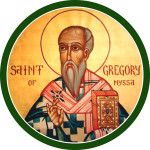
It became obvious to subsequent Church Fathers, such as St. Gregory of Nyssa (335-395 AD) and St. Augustine (354-430), that the scriptural figure of “ransom” could only be taken so far. After all, who would receive the ransom? The devil? And if so, how could the infinitely good God owe the devil anything?
St. Gregory of Nyssa’s response can be found in his work, The Great Catechism, in which he describes the incarnated body of Jesus acting as “bait” on the “hook” of the Deity:
“In order to secure that the ransom in our behalf might be easily accepted by him who required it, the Deity was hidden under the veil of our nature, that so, as with ravenous fish, the hook of the Deity might be gulped down along with the bait of flesh, and thus, life being introduced into the house of death, and light shining in darkness, that which is diametrically opposed to light and life might vanish; for it is not in the nature of darkness to remain when light is present, or of death to exist when life is active” (XXIV). 9
St. Augustine, a Doctor of the Church, also proposed the notion
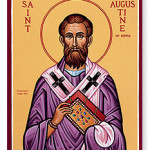
that the death of Christ on the cross was a trap for the devil when he taught,
“But the Redeemer came, and the seducer was overcome. And what did our Redeemer do to him who held us captive? For our ransom he held out His Cross as a trap; he placed in It as a bait His Blood. He indeed had power to shed His Blood, he did not attain to drink it. And in that he shed the Blood of Him who was no debtor, he was commanded to render up the debtors;”10
 By the way, if you’ve read C.S. Lewis’s famous story, “The Lion, the Witch, and the Wardrobe”, you probably can recognize St. Augustine’s explanation in the narrative when the White Witch executes the Christ-figure Aslan in the place of the treacherous Edmund on the Stone Table. The witch rejoices over what she assumes is her “victory”, but her gloating turns to horror when Aslan rises from the dead and she realizes that she unwittingly undid the dark magic that held the land of Narnia for so long.
By the way, if you’ve read C.S. Lewis’s famous story, “The Lion, the Witch, and the Wardrobe”, you probably can recognize St. Augustine’s explanation in the narrative when the White Witch executes the Christ-figure Aslan in the place of the treacherous Edmund on the Stone Table. The witch rejoices over what she assumes is her “victory”, but her gloating turns to horror when Aslan rises from the dead and she realizes that she unwittingly undid the dark magic that held the land of Narnia for so long.
The Satisfaction Theory

St. Anselm of Canterbury (1033 – 1109), a Benedictine monk and Doctor of the Church, is famous for his Satisfaction Theory of the Atonement.11 The International Catholic University’s “Christology” course text explains St. Anselm’s Satisfaction Theory of the Atonement well:
“When man offended God by disobeying his commandments, he offended against the infinite dignity of God. Thus it would take an infinite amount to satisfy for this infinite offense. After sin, man owes God an infinite amount of satisfaction, but man being finite cannot pay such an amount. And because man has already disobeyed God, he cannot even give to God everything that he could have given to God; he can no longer give sinless life. Only an infinite God could provide the infinite satisfaction. Only a man can satisfy since he caused the offense. The only solution therefore is a God-man who as God can provide infinite satisfaction and as man can satisfy for man’s offense.”

Peter Abelard (1079-1142) held that Christ’s death for our salvation was not expiatory, but rather was the supreme example of God’s love for us, and its purpose was to convince us to repent.12
Bernard of Clairvaux (1090 – 1153), a Cistercian monk and Doctor of the Church, opposed Abelard’s rejection of the expiatory nature of Jesus’s sacrifice and maintained the position that Christ’s cross did indeed have a sacrificial character before God. At the same time, St. Bernard drew upon Abelard’s emphasis on Christ’s love and the awakening of love in the believer, something that St. Anselm did not address in his explanation.

St. Thomas Aquinas, another Doctor of the Church, improved upon St. Anselm’s satisfaction theory in two ways. First, he says that God could have forgiven man without due satisfaction, but that it was most fitting for man that God forgave him through the death of Christ. This method was most fitting because it involved reparation and allows us to participate in the reparation.
Why was Jesus’s sacrifice most fitting?
How was Jesus’s sacrifice “most fitting”? Consider this analogy, keeping in mind that all analogies have their limits. Suppose a young boy, while playing baseball with his buddies, breaks his neighbor’s kitchen window with his ball. Now the neighbor could say to the boy, “Son, it’s okay. Don’t worry about a thing, try to forget it ever happened. That window means nothing to me.” Alternatively, he could say, “Son, I really want my window fixed, but I know that it’s impossible for you to pay to have the damage repaired and you don’t know even know how to fix a window. I’ll pay for the glass and repair the window myself. Walk with me down to the hardware store to get the supplies, and after that, you can help me while I fix the window.”
Which alternative would be most “fitting”, or be most consistent with the neighbor’s passion to make things right? The little boy’s help will probably not amount to much, but the kindly neighbor, through his sacrifice and generosity, is imbuing it with great meaning and purpose. In a limited way, this story shows a way in which Christ’s sacrifice was most fitting in the eyes of St. Thomas Aquinas. I would add that St. Thomas also maintained that it was not only the infinite dignity of God, but the love of God, that was the basis or driving principle of satisfaction.13
St. Thomas emphasized the fact that Christ’s death was both a gift of the Father and a self-offering on the part of the Son. St. Thomas Aquinas says,
“Christ as God delivered Himself up to death by the same will and action as that by which the Father delivered Him up; but as man He gave Himself up by a will inspired of the Father. Consequently there is no contrariety in the Father delivering Him up and in Christ delivering Himself up.”14
Summary
Jesus’s death was truly an expiatory sacrifice satisfying man’s infinite debt to God and was a matter of both justice and love. Only an infinite God could provide the infinite satisfaction. Only a man can satisfy since he caused the offense. The solution therefore is a God-man who as God can provide infinite satisfaction and as man can satisfy for man’s offense.15 But this sacrifice, the sacrifice of the New Passover, was both a self-offering of Jesus and a gift of the Father and was based on God’s great love for us. While God could have saved us in another manner, this method was most fitting because it involved reparation and allows us to participate in the reparation. Secondarily, it models for us what it means to “die to self”, which is the essence of repentance and invites us to that repentance.
The thoughts of these saints are not clumsy rationalizations, but rather are an example of the Church’s slow and gradual exploration of the mystery of the sacrifice of Jesus on the cross. The great mysteries of our Faith are not impenetrable puzzles, never to be understood by men, but rather are wells of infinite depth giving life-giving water. Throughout the centuries holy men and women will draw water ever deeper from the well, without ever, at least on this side of eternity, reaching the bottom.
Endnotes
[1] “Dictionary of Biblical Theology”, p 406.
[2] “Dictionary of Biblical Theology”, p 407.
[3] “Jesus and the Jewish Roots of the Eucharist”, by Brant Pitre, p51-57.
[4] “Jerome Biblical Commentary”, p 729.
[5] , “His disciples recalled the words of scripture, ‘Zeal for your house will consume me.’” (John 2:17)
[6] The Works of Flavius Josephus, War of the Jews, Book 6, Chapter 9, http://www.biblestudytools.com/history/flavius-josephus/war-of-the-jews/book-6/chapter-9.html, retrieved July 30, 2014..
[7] “Fundamentals of Catholic Dogma”, Dr. Ludwig Ott, p. 186.
[8] Matthew 20:28, 1 Timothy 2:5-6, and Revelation 5:9
[9] St. Gregory of Nyssa’s Great Catechism, http://www.newadvent.org/fathers/2908.htm, retrieved August 31, 2014
[10] St. Augustine’s Sermon cxxx, Part 2, http://www.ewtn.com/library/PATRISTC/PNI6-12.TXT, retrieved August 31, 2014.
[11] Cur Deus Homo (“Why God Became Man”), St. Anselm of Canterbury, http://www.fordham.edu/halsall/basis/anselm-curdeus.asp, retrieved August 31, 2014
[12] Independent Catholic University, Course in Christology, Lesson 11, http://icucourses.com/pages/037-11-salvation-theories-of-atonement, retrieved August 31, 2014
[13] Ibid.
[14] Summa Theologica, Third Part, Question 47, Article 3, http://www.newadvent.org/summa/4.htm, retrieved August 31, 2014
[15] Independent Catholic University, Course in Christology, Lesson 11, http://icucourses.com/pages/037-11-salvation-theories-of-atonement,
References
- “Dictionary of Biblical Theology”, 2nd Edition, Edited by Xavier Leon-Dufour, The Word Among Us Press, 1988.
- “Daily Life in the Time of Jesus”, by Henri Daniel-Rops, Servant Books, Ann Arbor, Michigan, 1980. Nihil Obstat, Imprimatur.
- “Our Sunday Visitor’s Catholic Encyclopedia”, Revised Edition, Edited by Peter M.J. Stravinskas, Our Sunday Visitor, Inc., Huntington, Indiana, 1991.
- “Jesus and the Jewish Roots of the Eucharist”, by Brant Pitre, Doubleday, New York, 2011. Nihil Obstat, Imprimatur.
- The Works of Flavius Josephus, War of the Jews, Book 6, Chapter 9,http://www.biblestudytools.com/history/flavius-josephus/war-of-the-jews/book-6/chapter-9.html, retrieved July 30, 2014.
- Scriptural and Catechetical References, as well as teachings of the Ecumenical Councils of the Church: Click Here
- “Dictionary of Biblical Theology”, 2nd Edition, Edited by Xavier Leon-Dufour, The Word Among Us Press, 1988.
- “Understanding the Wrath of God”, Msgr. Charles Pope, http://blog.adw.org/2012/08/understanding-of-the-wrath-of-god/, retrieved August 31, 2014.
- St. Gregory of Nyssa’s Great Catechism, http://www.newadvent.org/fathers/2908.htm, retrieved August 31, 2014
- Independent Catholic University, Course in Christology, Lesson 11, http://icucourses.com/pages/037-11-salvation-theories-of-atonement, retrieved August 31, 2014
- Summa Theologica, 3rd Part, Question 47. St. Thomas Aquinas. http://www.newadvent.org/summa/4.htm, retrieved August 31, 2014
- Cur Deus Homo (“Why God Became Man”), St. Anselm of Canterbury, http://www.fordham.edu/halsall/basis/anselm-curdeus.asp, retrieved August 31, 2014
- Peter Abelard: The Cross and God’s Love, http://www.theologian-theology.com/theologians/peter-abelard-gods-love/, retrieved August 31, 2014.
- “Mere Christianity”, Chapter 4, “The Perfect Penitent”, C.S. Lewis, http://homepages.paradise.net.nz/mischedj/ca_lewisatone.html, retrieved August 31, 2014
- “Fundamentals of Catholic Dogma”, Dr. Ludwig Ott, Tan Books and Publishers, Inc., Rockford, Illinois, 1960.
Ecumenical Councils of the Church
The Ecumenical Council of Ephesus (431) teaches, “He (Christ) offered Himself for us as a sweet odor (that is, a pleasing sacrifice) to the God and Father.” The Ecumenical Council of Trent (1545), in its authoritative teaching on the Sacrifice of the Mass, presupposes that Christ’s death on the cross was a sacrifice, calling it an “oblation” on the “altar of the cross.” None of the other 19 Ecumenical Councils of the Church have contradicted these teachings, including the Second Vatican Council.
The Catechism of the Catholic Church
The Catechism of the Catholic Church sums up the Church’s teaching nicely: Christ’s death is both the Paschal sacrifice that accomplishes the definitive redemption of men, through “the Lamb of God, who takes away the sin of the world”, and the sacrifice of the New Covenant, which restores man to communion with God by reconciling him to God through the “blood of the covenant, which was poured out for many for the forgiveness of sins”. This sacrifice of Christ is unique; it completes and surpasses all other sacrifices. First, it is a gift from God the Father himself, for the Father handed his Son over to sinners in order to reconcile us with himself. At the same time it is the offering of the Son of God made man, who in freedom and love offered his life to his Father through the Holy Spirit in reparation for our disobedience. For as by one man’s disobedience many were made sinners, so by one man’s obedience many will be made righteous.” By his obedience unto death, Jesus accomplished the substitution of the suffering Servant, who “makes himself an offering for sin”, when “he bore the sin of many”, and who “shall make many to be accounted righteous”, for “he shall bear their iniquities”. Jesus atoned for our faults and made satisfaction for our sins to the Father. {CCC 613-615]
Sacred Scriptures
Sacred Scriptures are replete with evidence that Christ’s death was sacrificial: “even as the Son of man came not to be served but to serve, and to give his life as a ransom for many.” Matthew 20:28 “For there is one God, and there is one mediator between God and men, the man Christ Jesus, who gave himself as a ransom for all, the testimony to which was borne at the proper time. 1 Timothy 2:5-6 “and they sang a new song, saying, “Worthy art thou to take the scroll and to open its seals, for thou wast slain and by thy blood didst ransom men for God from every tribe and tongue and people and nation” Revelation 5:9 “Then he took a cup, and when he had given thanks he handed it to them saying, ‘Drink from this, all of you, for this is my blood, the blood of the covenant, poured out for many for the forgiveness of sins.” Matthew 26:27-28 NJB Jesus used sacrificial words such as “body”, “blood”, “poured”, “offered” and “given” at the Last Supper. Moreover, when he lifted the cup and spoke of the “blood of the covenant” he was echoing Moses’ words when he sealed the Old Covenant with a sacrifice on Mt. Sinai. (Exodus 24:8) “The next day, he saw Jesus coming towards him and said, ‘Look, there is the lamb of God that takes away the sin of the world.” John 1:29 NJB “…and follow Christ by loving as he loved you, giving himself up for us as an offering and a sweet-smelling sacrifice to God.” Ephesians 5:2 NJB “Throw out the old yeast so that you can be the fresh dough, unleavened as you are. For our Passover has been sacrificed, that is, Christ;” 1 Corinthians 5:7 NJB “God appointed him as a sacrifice for reconciliation, through faith, by the shedding of his blood, and so showed his justness; first for the past, when sins went unpunished because he held his hand;” Romans 3:25 NJB
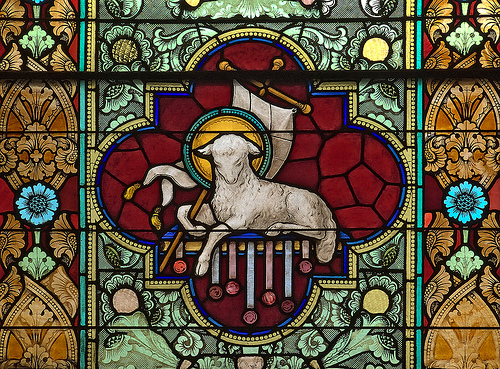
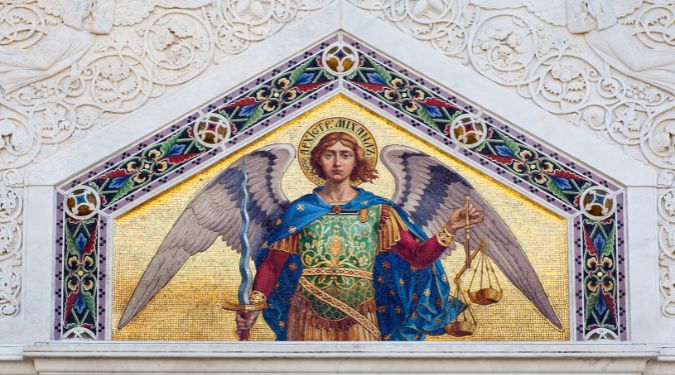
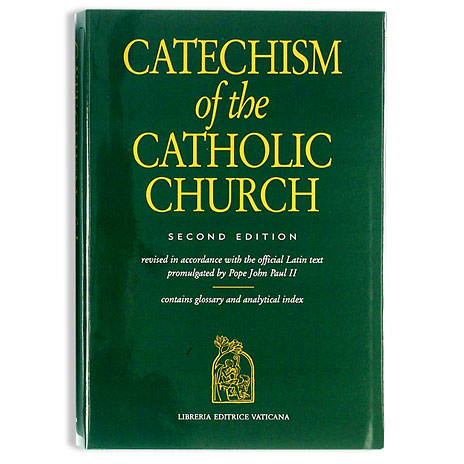
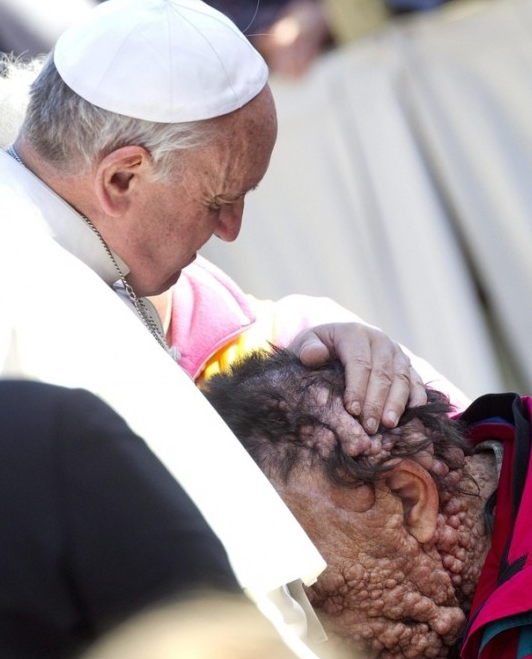
Here is my response to your post on WordOnFire:
“Charles, you need to understand that definition of terms is key.
Rene Girard is not a Church father and is not really much of a Catholic either, though he does work with Catholic themes and was a Catholic. Rene Girard is a modern philosopher with all the trappings of modern philosophy, the Church fathers are biblical and deeply ingrained in Jewish tradition; not at all comparable.
Rene Girard defines “sacrifice” through his scapegoating mechanism. The Church fathers define sacrifice through the proper definition of communion with God by offering up ones self in thanks by offering up a possession in your stead. They use the same term but only one uses the term the proper way, and it isn’t Girard.
Girard is not biblical, therefore what he says is a nice diversion but nothing to be taken as biblical. A thoughtful Catholic would know this.”
I won’t be here on this site again to read your reply.
I agree with you completely. I meant that comment as a critique of Girard’s perspective, but you read it differently, and the fault is all mine. I wasn’t clear. Girard rejected the sacrificial nature of Christ’s death, in contradiction to the Church Fathers. By the way, did you even read my post?